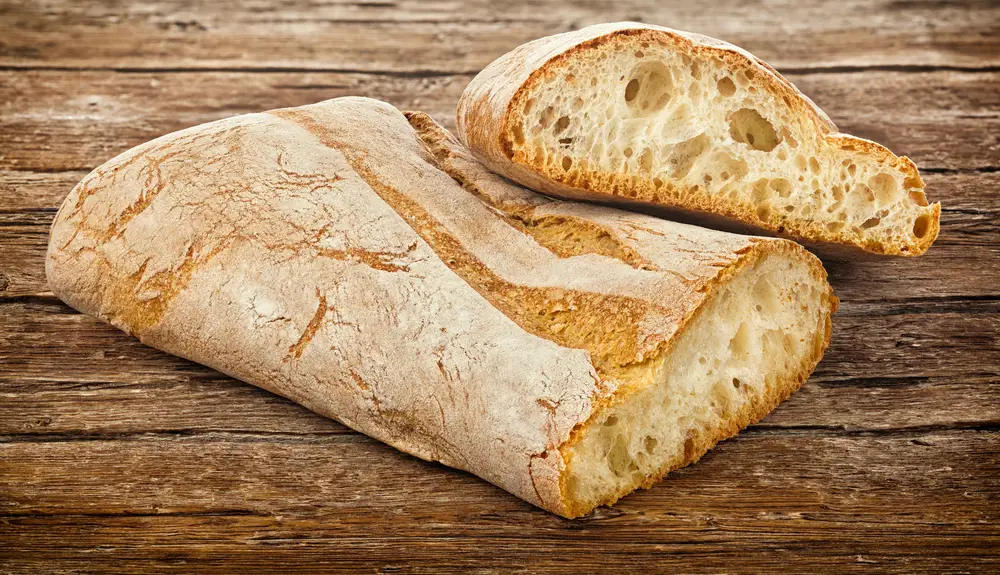
Ciabatta bread is a popular type of bread, but though it looks rustic, giving it the appearance of a bread that originated long ago, ciabatta is a relatively new concoction.
Believe it or not, ciabatta bread was first made in 1982 by Arnaldo Cavallari, an Italian baker. Cavallari called the new bread ciabatta polesana after Polesine, the area where he lived, and ciabatta, which means “slipper” in Italian. This is what Cavallari thought the bread resembled.
Cavallari wasn’t just trying to come up with a new bread for no reason. He and other Italian bakers were concerned with the growing popularity of baguettes imported in bulk from France that were being used to make sandwiches. The baker then set out to come up with a commercial alternative.
Cavallari spent weeks testing new dough mixes, bake times, and hydration levels while using his own flour mixture. When he hit on the right mixture, he knew he had a perfect bread for sandwiches. Cavallari registered the name ciabatta polesano for the bread, and in 1989, he registered the name ciabatta italiana. By 1999, the names were registered in eleven different countries.
Ciabatta spread around quickly, and different regions made their own slight variations, either with a crispier crust or seasoned with oil or herbs. It then didn’t take long for ciabatta to spread to the rest of Europe. In 1985, the retailer Marks and Spencer began offering it in the United Kingdom, and in 1987, it made its way to America, specifically Cleveland, Ohio, where three Italian bakers arrived and came up with a way to mass-produce it. They developed a method to freeze the bread after it was freshly baked. From there, ciabatta became available across the country.
If it wasn’t for the French baguette and its proliferation in Italy in 1982, we might never have had ciabatta bread.
Learn more great facts about bread.
Sources: The Guardian, Baking History, Bricco Salumeria

